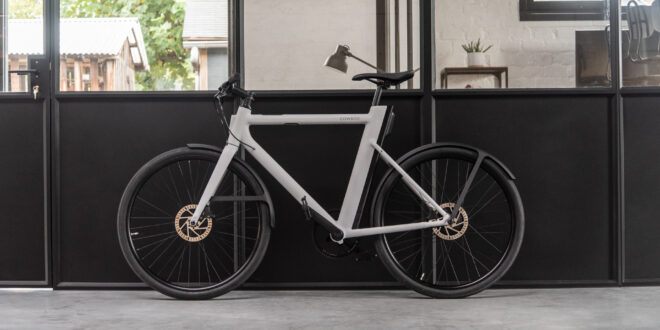By Tanguy Goretti, Cowboy founder

Over the past decade, digital transformation has taken place across most industries, and the bike world is no exception. At a time when cycling has never been more popular, software has been a key tool in attracting new customers as we look to grow the use of e-bikes. Now more than ever, it’s crucial that we lead the way and continually innovate, inspiring a new generation of riders as they seek to find new ways of urban mobility in the wake of the pandemic, and as we look to fight climate change.
The first patent for the electric bike was over 100 years ago and, to date, the focus has always been on the hardware to provide cyclists with an easier ride. At the time, integrating a battery-operated product to the market was revolutionary and made cycling more accessible than ever before. However, e-bikes have become more than just an assisted ride. They are addressing the complex problems involved in urban mobility and sustainability as well as the demands of the modern-day consumer.
This new approach is being driven through software, mainly through connected apps. It’s making e-bikes a worthy transport alternative in urban areas. These features can help keep riders safe, protect assets and improve traffic flow across cities. To truly offer competition against other methods of transport, micromobility companies must invest in fully integrated solutions.
When Cowboy was established in 2017, we knew we wanted to create a smart, connected bike that offered safety, convenience, intuitive riding, peace of mind and freedom for the smartphone generation. We set out to offer riders a micromobility ecosystem with personalised features and over the air updates, that enable the bike to get smarter over time. This would open up the e-bike world to a whole new audience and really give them a transport alternative to get excited about.
And while our hardware has seen us achieve innovation through our unique industrial design that includes the signature use of a removable battery and intuitive riding, it’s the in-app features that have transformed the offer. However, we wanted to move the industry forward and did so by bringing new possibilities with software. In order to integrate worthy digital solutions, it’s vital to invest in the right talent. It’s a bit more complicated for e-bikes, as you need a team that can work across the whole product from the app to the frame.
The next challenge is deciding which features will be useful, as it can be a double-edged sword. Apps provide endless possibilities, but this means it’s easy to get lost and select features that may not be needed and act more like a gimmick. For us to strike this balance, we get regular feedback from our community of users through surveys and interviews as well as monitoring comments on social media and the like. In addition, the ability to access rider data enables us to see what features are used and help drive the development of future ones.
We also have 1,000 riders registered to our beta programme who are heavily involved in the early stages of feature development and help form the final offering. This method has led us to develop more features that are really changing the way people travel. This year alone, we have released theft notifications, auto-unlock, crash detection and manual unlock, with more planned. The applications you can offer can be truly invaluable. One example is anti-theft. Working via a GPS chip in the frame, users are alerted to when their bike has been moved. This creates real-time tracking information, making it significantly easier for bikes to be recovered.
From a customer service perspective, apps are great too as it means that companies can chat directly to riders and vice versa in a real-time chat. Developments in technology mean the industry can innovate further and address more complex issues, such as safety and air quality, which we see as a big growth area. It now means that if a rider has a crash, an emergency contact is notified if required via the app. Active safety during a ride will also be more important in the future, and more sensors will be integrated into the vehicle to provide real-time feedback during the ride. As and when the world returns more to normal, and traffic increases, air quality will be a concern for riders. Air quality monitoring allows riders to select a less polluted route using in-app navigation.
Another trend will be deeper integration between bikes and the city. We know that Governments across Europe are keen to invest in infrastructure that supports cyclists along with other road users and pedestrians. However, this isn’t as easy as it sounds. They face a number of challenges as they seek to make the roads more multi-vehicle purpose as well as safe and aiding traffic flow. Software will be integral to urban traffic planning success as it enables data flow between cities and micromobility actors. This will be an excellent resource as cities transform their spaces to enable more cycling.
This is a truly exciting time in the e-bike world. Demand is increasing and software allows companies to attract new audiences as they seek to discover a new way of travel. We are already looking forward to the features that we will release in the near future and beyond.
 BikeBiz Bicycle and cycling retail news
BikeBiz Bicycle and cycling retail news




